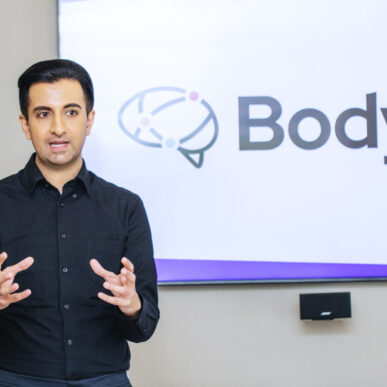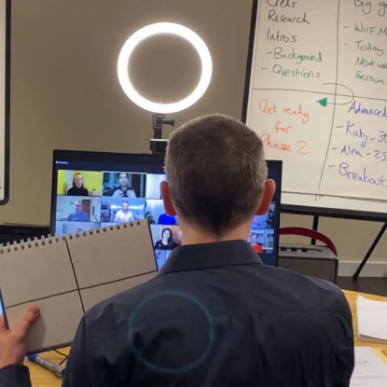How To Improve Your PowerPoint Presentation Slides
I’m sure you have sat through many dreadful slides. Even if the speaker is terrific, when you have to look at hundreds of bullet-points and terrible graphics it can be painful. Knowing how to improve your PowerPoint slides can make a painful presentation into a much more positive one!
In 2015, I was invited to speak in San Jose, California, at Nancy Duarte’s office, home to her slide creation geniuses! They are as passionate about turning slides into amazing visual stories as we are about teaching you how to become a powerful and confident story-teller and I learned a lot.
They had recently invited another inspirational slide guru and author of Presentation Zen, Garr Reynolds, to talk to their team. You can take a look at his videos and check out some of his famous design tips here.
You can also pass on the link to those people in your company who struggle with slides and save yourself from sitting through any more terrible presentations!
Our Top Tips for Compelling Slides
So what can you do to improve a PowerPoint presentation whilst hooking your audience in?
Here are some essential top tips for creating compelling slides…
Use slides as visual aids
The golden rule of slides is that they are visual aids. This means that they need to be visually appealing – so get rid of the text! They also need to be an aid for your audience, not your notes, or a handout. They should create a visual back-drop to your story.
Think of it like this: You are Batman (the main focus), the slides are Robin (the helpful side-kick). If the slides become Batman then you might as well email them to everyone and cancel the meeting! Plus some of the best Batman films don’t even feature Robin. That means it’s okay to switch off the slides and talk to people. They are there to hear from you, not look at slides.
Create a separate script
People often include lots of text on their slides so that it can function as a script, and also as a leave-behind document. This is effectively a slide-ument! It’s a mess. It doesn’t help your audience. It’s just a crutch for you as the presenter.
Instead, you need to create three separate things: your script, your slides and your summary document.
Start with writing your script with your audience in mind. Think about what your audience needs to hear in order to be convinced by your ideas. You should use elements of storytelling to help compel your audience to engage with your content: think about your audience’s challenges and what they will gain from listening to your presentation.
Once you have written down your ideas and planned out your script, you can start to think about whether you need slides to support your presentation. If you don’t need slides, you don’t have to use them! Far better to have the audience focus on you, the presenter, than superfluous slides.
Use powerful imagery
We remember pictures much more easily than words. As Garr Reynolds points out, the picture superiority effect is a phenomenon that you can use when designing slides to make them more memorable than just using words with bullet points. It’s not necessary to use words on slides! Some of the best ones have no words at all.
Slides should be as visual as possible, supporting the points that you are making. Think about what imagery you can use to capture your audience’s attention and make your presentation really stand out. There are many paid and free image resources available online, including Adobe Stock, Shutterstock, Pixabay.com and Canva that will allow you to download high quality, impactful images that support your storytelling and improve your presentation slides.
And this is your second reminder: if you can’t find an image that works to illustrate the point you are making, perhaps you don’t need a slide at all…
Provide a useful leave-behind document at the end
If you need to give out a copy of the information on your slides, create a separate document. Nobody wants a print out of your slide-ument! Give them a useful summary instead.
Make sure you include the headline or ‘essence’ of your information, as well as the key points as you have outlined them in your presentation.
If you don’t have time to create a brand new document, try writing your script prompts in the ‘presenter notes’ section of PowerPoint (rather than plastering your slides with text). Then, you can simply export the document as a PDF and include the presenter notes too.
This means your audience will be able to read them alongside the printed slides, but they won’t distract from your presentation when you’re speaking.
Add interactive elements
There’s no excuse for boring slides anymore. There are many elements that you can bring in to make your slides engaging and interactive.
For example, software such as Mentimeter can allow you to create beautifully interactive quizzes that allow you to interact with your audience, gain feedback in real time and make your audience a part of the presentation.
Even if you’re not very technical, you can think about engaging your audience by arousing their curiosity. For example, if you’re showing dry data or charts, you can make them more engaging by asking your audience to guess if the next data point is higher or lower, etc.
Practise and rehearse
Of course, great slides are not the only thing you need. Having great slides is like having a nice car. It is only useful if you know how to drive. If you don’t you will crash no matter how nice the car is!
This means that you really need to practise and rehearse how you are going to deliver your presentation. Do this out loud, perhaps in front of a mirror (or film yourself if you can). Get used to how long it will take you to get through each part of your presentation. Are there any words, phrases or sentences that are tricky? How will you segue from one slide to the next? Practising gives you an opportunity to uncover any tricky parts and will ultimately help you to feel more confident on the day.
Transform your presentations with our help
If your slide deck looks like it may need a little TLC, we’re here to help you. Get in touch with our dedicated team today to discuss presentation skills training.




















